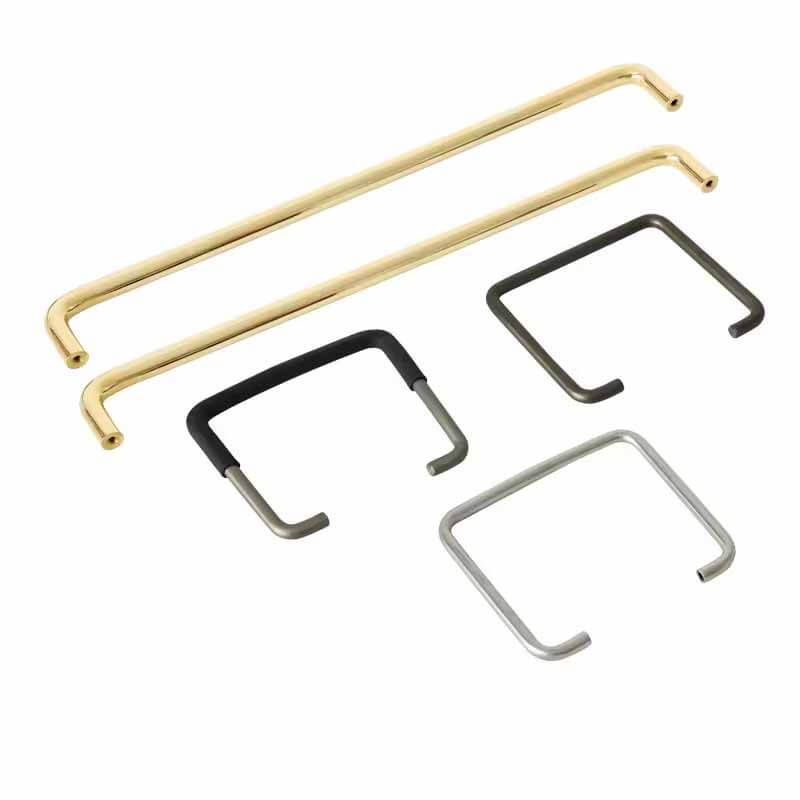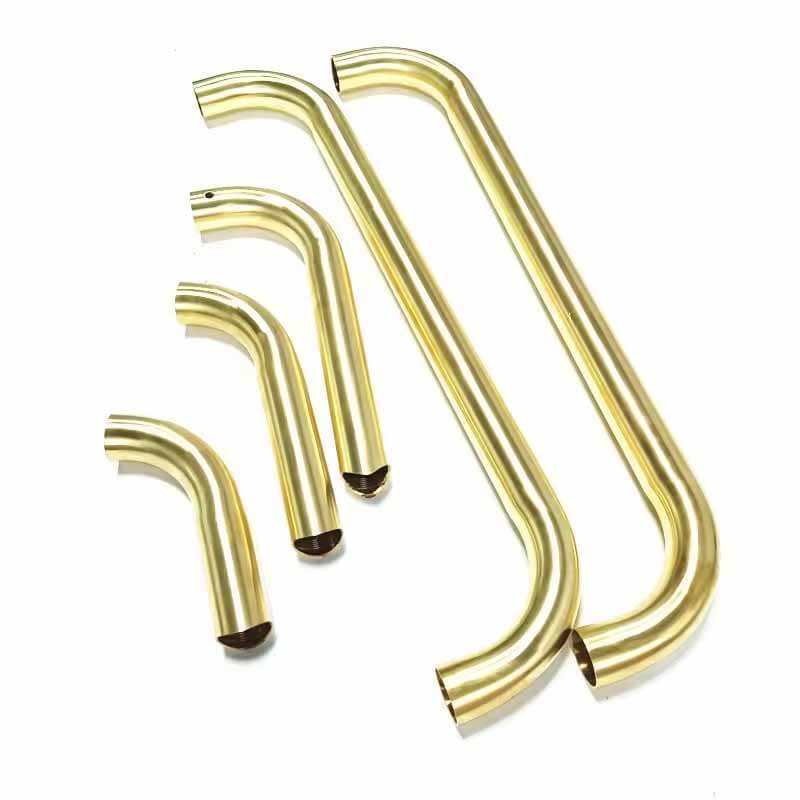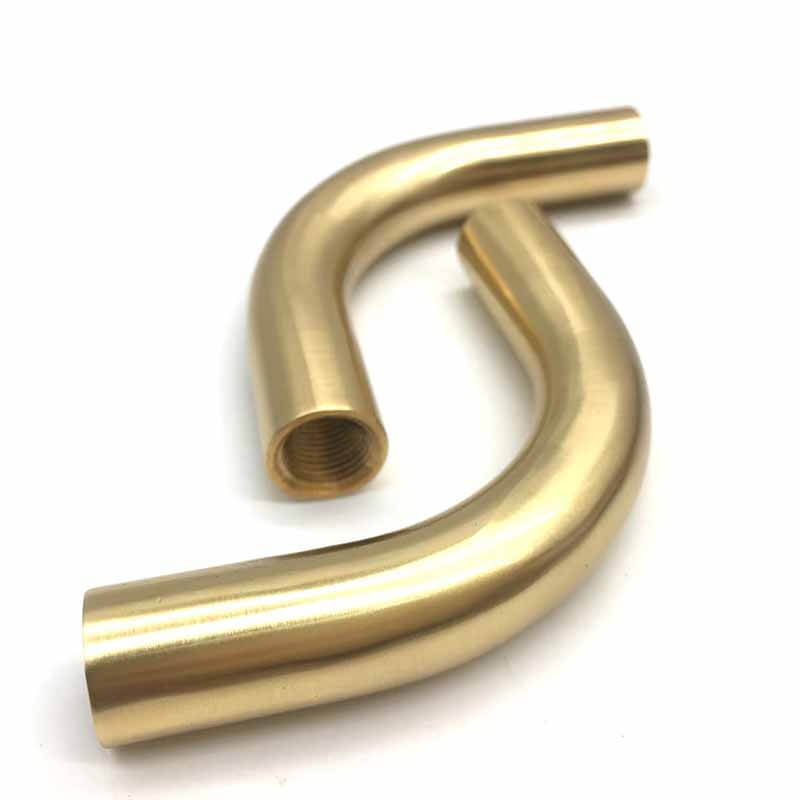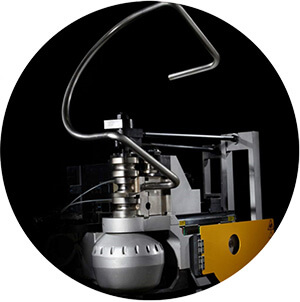Things You Need to Know About Brass Tube Bending

Brass tube bending plays an important role in many industries, such as evaporators, heat exchangers, lighting, plumbing, etc, which is a kind of versatile metal tube to make the key components for the purpose of decoration, thermal conductivity, electrical conductivity, and corrosion resistance.
What is Brass Tube Bending?
Brass tube bending is a process that shapes the brass tube into specific curves and angles without compromising its structural integrity. To ensure the bending results in a good shape with precise dimensions to achieve different functions, there are various methods to bend brass tubing, such as rotary draw bending, mandrel bending, and roll bending. Which method to use depends on the bending request of different projects.
Importance of Brass Tubes in Various Industries
- Plumbing and HVAC Systems: Due to the brass tube has excellent corrosion resistance, so it is a good choice for refrigerant lines and condenser units in the HVAC system.
- Musical Instruments: Instruments like trumpets and trombones use brass tubes for their ability to produce a warm, rich sound.
- Automotive Industry: Brass tubes are used in radiators, due to their durability and resistance to wear.
- Lighting: Due to the durability and aesthetics of brass tubes, make it the ideal tube material to make the components of hanging lamps, floor lamps, and other decorations.
- Furniture: Due to the vintage aesthetic of the brass tube, it is suitable for making the legs of vintage chairs and tables.

Key Factors to Consider in Brass Tube Bending
Before bending brass tube or rod, you need to know the key factors to ensure high quality and high precision. Each factor plays a critical role in determining the feasibility and outcome of the bending process.
Tube Diameter and Wall Thickness
- Tube Diameter: The diameter of the brass tube is important to determine the working capacity of the bending machine. The thicker the brass tube, the more powerful the tube bending machine needs to be for bending.
- Wall Thickness: The wall thickness of a brass tube represents its strength and flexibility while bending. The thinner the copper tube, the greater the risk of deformation during bending, under this case, we suggest you use a mandrel tube bender to avoid tube deformation. Also, the thicker the brass tube, the greater the bending force required to bend it.
Bend Radius and Bend Angle
- Bend Radius: The bend radius is the distance from the center of the bend to the inside, middle, or outside surface of the tube. The smaller the bending radius, the more difficult it is to bend the tube. Check tube bending basics here.
- Bend Angle: A precise bend angle is important to ensure proper fitment in assemblies.
Material Hardness and Temper
- Material Hardness: Brass tubes come in various hardness levels, they have soft (annealed) material, half-hard material, and hard material. Understanding the brass tube hardness will be better for you in choosing the right bending machine.
- Temper: The temper of brass indicates its hardness and strength, which is also a critical consideration.
Surface Finish and Quality Requirements
- Surface Finish: Brass tubes are often used for decoration purposes, so when bending brass tubes, you need to take care of handling and lubrication.
- Quality Requirements: Different applications have different requests for bending tolerance, surface imperfections, and structural integrity. Knowing the quality requirements will help you bend the qualified brass tubing.

Bending Methods for Brass Tubes
Choosing the appropriate brass tube bending machine depends on the production volume you require and other technical bending requirements. Below are the four main brass tube bending methods for mass production.
Rotary Draw Bending
Rotary draw bending is a commonly used method that clamps a tube onto a rotating die. As the die rotates, it draws the tube around a bend die, forming the tube to the desired bend radius.
Advantages of Rotary Draw Bending
- Precisely control the bend radius and bend angle.
- Suitable for medium-scale projects.
- Minimal deformation and wrinkling.
Applications of Rotary Draw Bending
- Automotive components.
- Aerospace parts.
- Furniture manufacturing.
- Handrails and other architectural elements.
Mandrel Bending
Mandrel bending is a bending method that is suitable for both normal tube and thin wall tube bending since this method uses a mandrel to insert into the tube to prevent collapse and wrinkling while bending.
Advantages of Mandrel Bending
- Supporting the inner diameter of the tube ensures it remains full and tubular.
- It is ideal for bending thin-walled tubes without deformation.
- Produces smooth, high-quality bends.
Applications of Mandrel Bending
- Exhaust systems.
- Plumbing pipes.
- Musical instruments like trumpets and trombones.
- Bicycle frames.
Compression Bending
For compression bending, the tube is held in place, and use a compression die pushes against it to create the bend. This method is often used for less complex bends with thicker wall tubes.
Advantages of Compression Bending
- Simple and cost-effective.
- Suitable for large-radius bends.
- Requires less sophisticated equipment.
Applications of Compression Bending
- Construction piping.
- Heavy-duty machinery parts.
- Basic structural components.
- Conduit and tubing for electrical installations.
Roll Bending
Roll bending, people is also known as section bending. With this method, a tube is passing through a series of bending rollers and then finally forming the tube into your desired bend. This method is often used to bend large radius bends.
Advantages of Roll Bending
- Capable of producing large-radius bends.
- Suitable for bending long lengths of tubing.
- Can bend tubes with larger diameters.
Applications of Roll Bending
- Architectural and structural applications.
- Large signage frames.
- Circular and spiral staircases.
- Large diameter piping systems.
Where to Buy Brass Tube Bending Machine?
TubeBenderN is a professional manufacturer of brass tube bending machines in China, our machinery can bend both brass tubes and brass rods. Our bending machine is simple and easy to use, suitable for a wide range of sizes and materials. Contact our engineer to get your bending solution Today!

Denis Lau
Denis Lau has 20 years of work experience in the metal processing industry. His major in university was mechanical engineering, and after graduation, he started from the bottom of the workshop, gaining extensive hands-on professional experience and the ability to tackle challenges from various industries.


